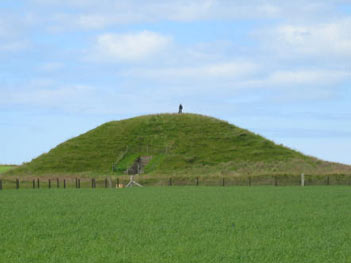Viking Family Memories December 5, 2012
Author: Beach Combing | in : Medieval , trackbackBack to families and remembering. This time though in the Northern Isles with the last of that cursed breed the Vikings…
Occasionally there are examples of writing in stone, which under special conditions, survive beautifully through the centuries. This is true of the several sheltered runic inscriptions found in the Maeshowe megalithic tomb on Orkney, which was only opened by modern archaeologists in 1861 about six hundred years after the runes were carved by Norse tomb raiders. There is the usual bilge, of course: ‘Ingigerth is the most beautiful of all women’ (next to a picture of a dog!), ‘Thorni had sex, Helgi carved’ (the language is more graphic but this is a sometime family site), ‘Benedikt made this cross’ and other fragments of ‘wisdom’ from our loathsome Viking ancestors. But most interesting is the following inscription.
These runes were carved by the best rune-master in the western ocean, with the axe that belonged to Gauk Trandilsson in the southern part of the country.
OK it’s not Milton. But it does, for a second, send a glancing evening sun ray deep into the Viking past. ‘the country’ is Iceland and Gauk Trandilsson is a figure from the twilight of Viking history-myth. There was once a saga of Gauk (now lost: another post another day) and in chapter 138 of Njal’s Saga we learn that Ásgrímur Elliða-Grímsson had killed Gauk his foster brother in the tenth century. The author of the runes was almost certainly Thorhall Ásgrímson who ventured into the tomb in the winter of 1153-1154. Now Thorhall was the great-great-great grandson of Ásgrímur and presumably the axe taken from the dead Gauk had been handed down the generations as a trophy and as a memory.
We are back to Mrs B and the teacup from Adowa or KR and family land: memories attach most efficiently to objects, heirlooms and stable territories: other examples, drbeachcombing AT yahoo SOT com. True, the memory is a ‘mere’ hundred and fifty years: the equivalent of us recalling ancestors who fought at Gettysburg. Impressive but not extraordinary. But consider this. The society in which Gauk, Thorhall and Ásgrímur lived was virtually illiterate (save for runes). There was no crutch then of writing to remember these deeds. Yet when Thorhall writes he takes for granted that his audience will understand who Gauk is and, seemingly, who he is ‘the best rune-master in the western ocean’: here we are not just remembering family history but the history of all prominent families.
Thorhall was also using as a weapon (or as a point for boasting?) an axe that was at least one hundred and fifty years old. Makes you wonder about our dating for some early medieval tombs…



